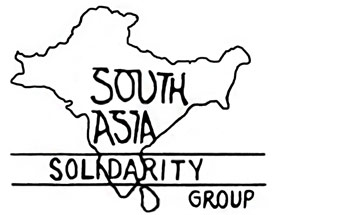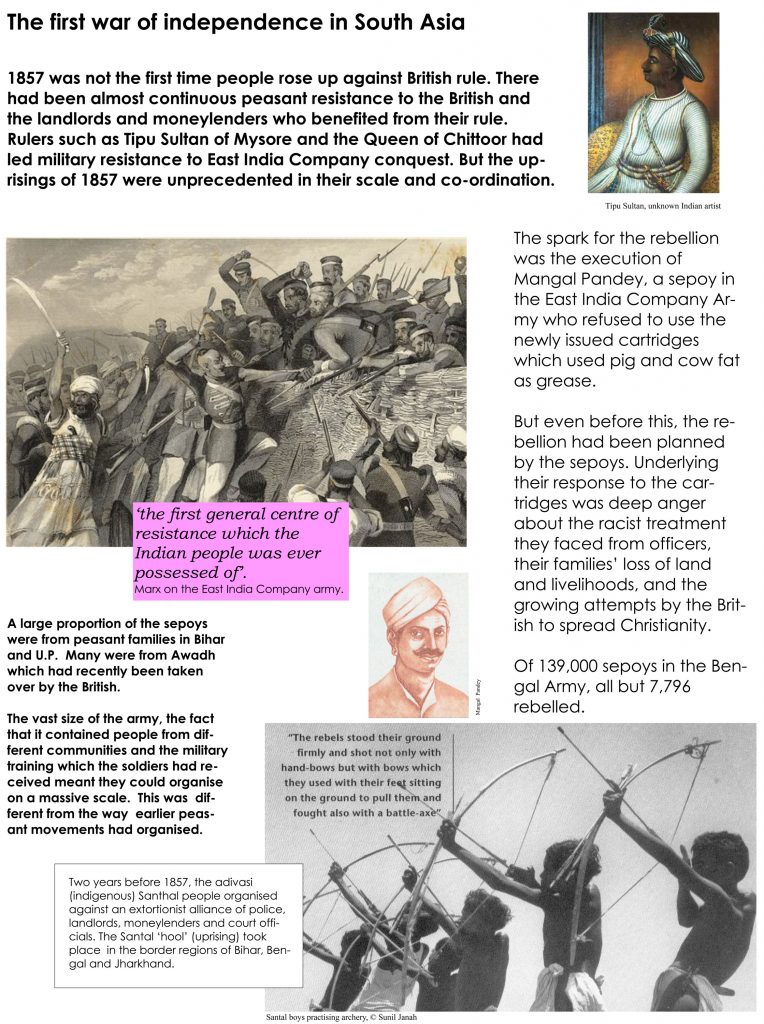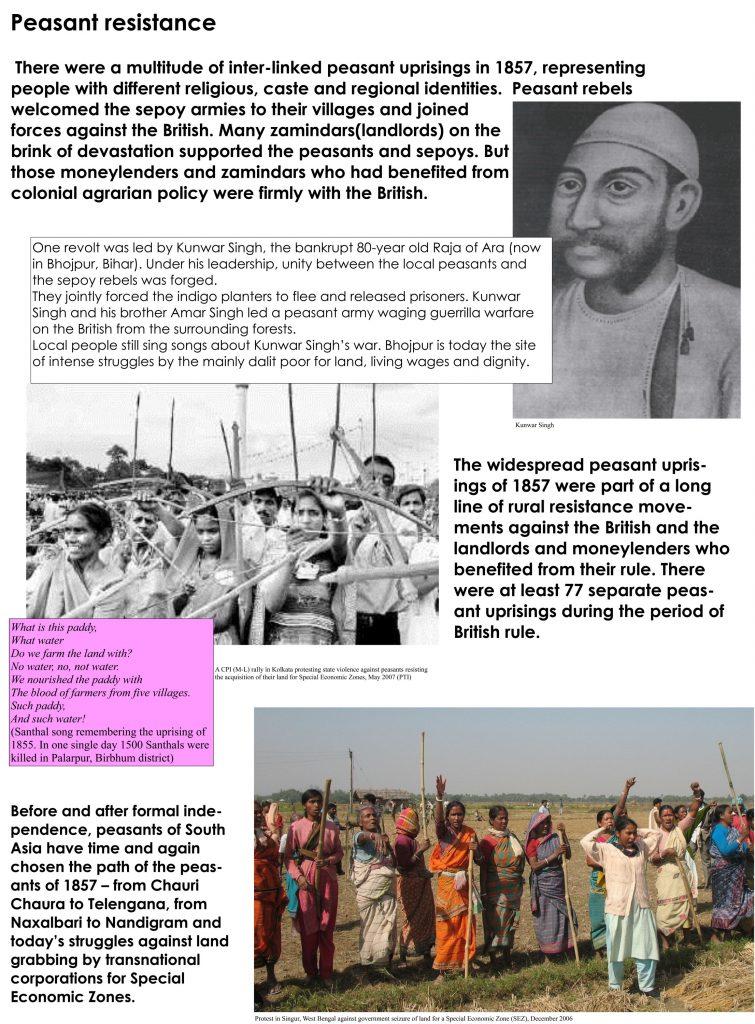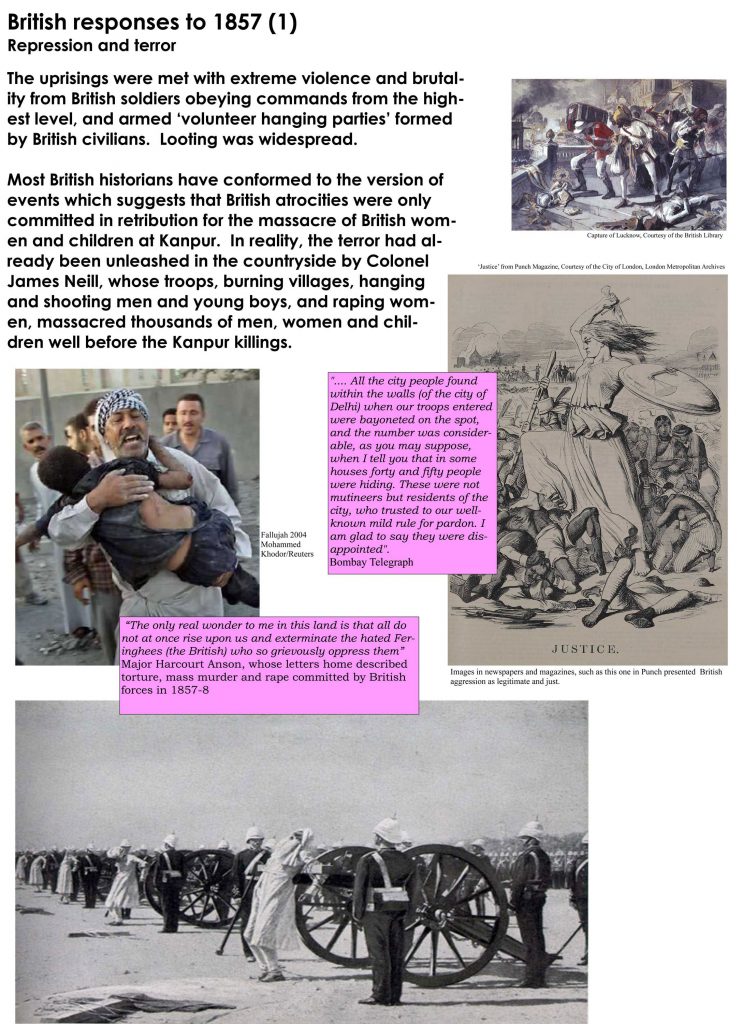1857 saw a sustained and widespread uprising against British rule in India. Although dubbed the ‘Indian Mutiny’ in colonial history books, the uprising, which spread across much of the northern half of South Asia (at that time called India, now including India, Pakistan and Bangladesh) and lasted almost two years, had the characteristics of a war against imperialism and for independence.
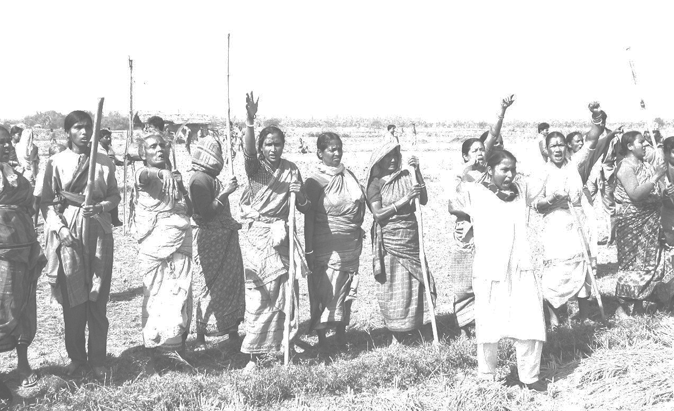
“You may hang me, or such as me, every day but thousands will rise in my place and your object will never be gained.”
Pir Ali, a bookbinder from Patna hanged by the British in 1857
People who have worked on producing this exhibition include in particular Naaz Rashid, Howard Doble, Anandi Ramamurthy, Kalpana Wilson, and Sarbjit Johal.
We would like to thank the following authors whose work we have used extensively in the exhibition:
Rajani Palme Dutt(1940) India Today, (London: Victor Gollancz)
Rajat Kanta Ray (2003) The Felt Community: Commonality and Mentality before the emergence of Indian Nationalism (New Delhi: Oxford University Press)
John Newsinger (2006)The Blood Never Dried: A people’s history of the British Empire (London: Bookmarks)
Nick Robins (2006) The Corporation that Changed the World: How the East India Company Shaped the Modern Multinational (London: Pluto Press)Mahasweta Devi (1956) The Queen of Jhansi, transl. Sagaree and Mandira Sengupta, (Kolkata: Seagull Books)
William Dalrymple (2006) The Last Mughal: The Fall of a Dynasty, Delhi, 1857, (London: Bloomsbury Press)
Pranay Krishna (2006) ‘Who is Afraid of 1857?’ Liberation, Vol.12, No.8, December available at www.cpiml.org/liberation/
Karl Marx and Frederick Engels Karl Marx on India (Articles from New York Daily Tribune and Marx and Engels’ correspondence, 1853-1862)
This exhibition was created by South Asia Solidarity Group and the 1857 Committee
(click on image to open in a new window)
